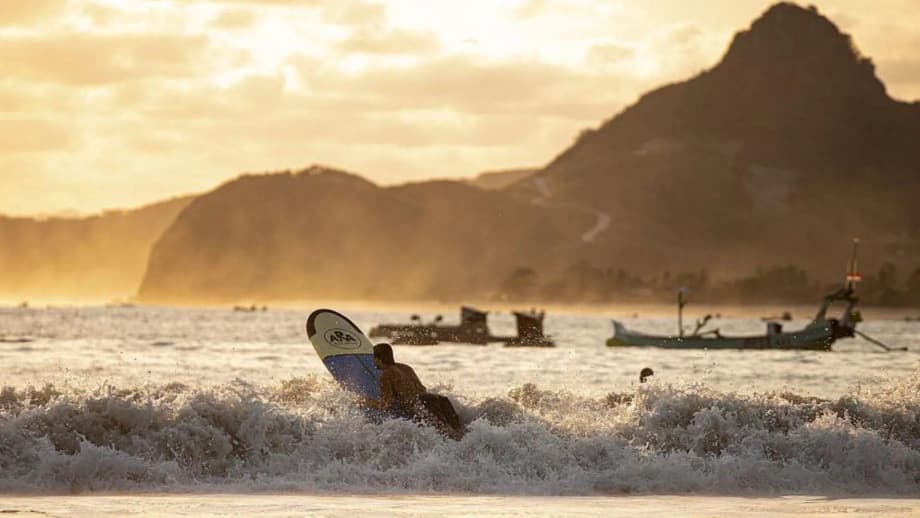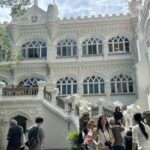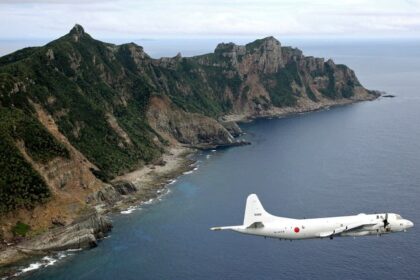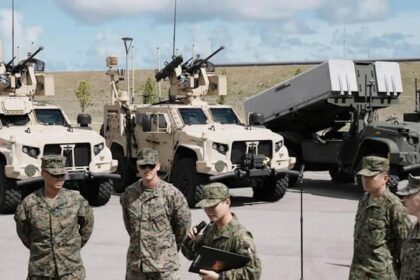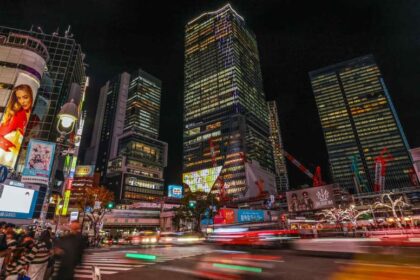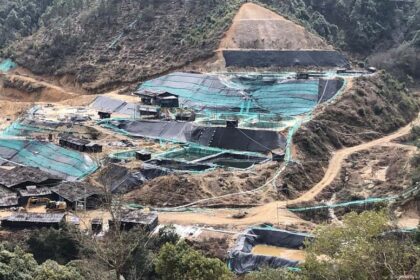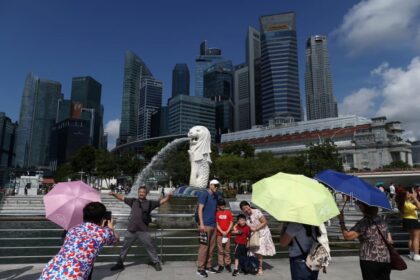A new magnet east of Bali
Damar grew up on Lombok wary of foreigners. Today he steers visitors into turquoise breaks as a sought after surf guide. His story mirrors the islands pivot. Lombok, just east of Bali, offers sweeping beaches, mellow reefs, and the ascent of Mount Rinjani without Balis gridlock. The views feel wide open, the roads less crowded, and the pace calmer, which is exactly the appeal for surfers, hikers, and families looking for space.
That quiet is giving way to a surge of investment. Indonesias government has spotlighted Lombok as a new national showcase, and the Mandalika coastal area in the islands south sits at the center. Resorts, beach clubs, cafes, and an international motorcycle circuit now anchor a zone designed to pull global attention. Locals sometimes call the process Balification, a shorthand for the promise and the fear it brings. Many welcome jobs and rising income. Others worry about evictions, access to the shore, and changes to culture and daily life.
The stakes extend beyond one island. Bali still draws a massive share of foreign arrivals, yet its popularity produces traffic, waste, and visitor fatigue. Lomboks experiment is a live test of whether Indonesia can spread tourism, protect nature, respect culture, and share the gains with the people who have long lived by these coasts.
What is driving Mandalikas rapid growth
Money, planning, and marquee events opened the gates. The Asian Infrastructure Investment Bank approved a sovereign loan of about 248 million US dollars to build core infrastructure in Mandalika. The project is Category A because environmental and social risks are substantial, and it includes tools like environmental impact assessments, resettlement planning, and an Indigenous Peoples plan. The official project overview describes a two phase effort focused on basic services, technical assistance, and stronger capacity for the developer, the Indonesia Tourism Development Corporation. The summary on the banks site sets out the aim plainly:
The objective is to provide sustainable core infrastructure for the development of a new tourism destination in the Mandalika region of Lombok.
Events then amplified the push. The international motorcycle Grand Prix now races on the Mandalika circuit, drawing visitors from across Indonesia and abroad. Officials estimated the 2025 race generated an economic impact of 4.8 trillion rupiah, with flights added and hotels at full capacity across Lombok. The excitement confirms why sports and entertainment are central to the strategy, but the scale also stresses roads, airports, and coastal villages during peak days.
Connectivity turned out to be a decisive factor. A study that analyzed airport data and social media during 2017 to 2022 found that air links through Lomboks Zainuddin Abdul Madjid International Airport, combined with high profile events and fiscal support, strongly influenced the tourism rebound after the pandemic. Passenger numbers slid during COVID, then climbed back in the new normal period. The research recommended better use of existing infrastructure, clear data sharing for faster decisions, and policies to manage land conflicts that can undermine long term investment.
A parallel track focuses on public services and community skills. The Indonesia Tourism Development Project (ITDP), supported by the World Bank, is improving water, sanitation, streets, and training in Lake Toba and Lombok. The program reports new or improved water access for hundreds of thousands of people, large areas set aside for walking and cycling, upgraded sanitation, and tens of thousands of workers certified in hospitality. More than 20,000 small businesses boosted their online presence, 65 tourism villages received mentoring, and the program estimates it helped create job opportunities for hundreds of thousands across six destinations, with average wages rising by more than 15 percent. In Lombok, disaster resilience and waste management received special attention after the 2018 earthquake, including a community run water system in Sembalun and facilities that convert waste into useful materials. The World Bank frames its mission succinctly:
Sustainable tourism that improves infrastructure, expands access to resources, and empowers local entrepreneurs.
For official project information, readers can consult the AIIB overview at this link, and the World Bank feature describing ITDPs results at this link.
Who gains and who gets left out
Studies of Mandalikas recent growth point to a broad ripple effect. Small businesses have multiplied near the circuit and in nearby towns. Hospitality, transport, food stalls, and souvenir shops all report higher turnover when events roll through. Many of those gains also reach villages outside the core zone. During peak weekends, homestays fill up far from the racetrack, drivers shuttle visitors between beaches and the airport, and local supply chains feed hotels and cafes.
The picture is uneven. Some micro and small firms cannot meet quality and logistics standards for major events. Access to coaching is still limited, and a share of vendors fall back on high interest loans that shrink margins. Street hawkers sometimes resort to pushy sales tactics when visitor flows are unpredictable, which can sour the experience and backfire on business. Researchers who spoke with entrepreneurs describe a need for basic financial literacy, better vendor selection processes, and fair chances for local companies to qualify for big event contracts. Those steps would help spread the benefits, reduce predatory lending, and improve service for guests.
Everyday stories show how fast the ground is shifting. Surf guides and diving instructors now out earn what they could make in fishing. Homestays have upgraded rooms and moved to online bookings. In Kuta on the south coast, hostels and simple warungs have been replaced by mid to high end rooms, yoga studios, and cafes aimed at international tastes. That shift raises rents. Some informal beach vendors lose access to prime spots, and a few families say their traditional walking paths to the water now pass through controlled resort areas. Locals who recognize the new opportunities also point to a need for guardrails so that the growth does not push them to the margins.
Land rights, evictions, and the human cost
The most painful flashpoints center on land. Civil society groups and UN human rights experts have raised alarms since 2019 about forced evictions, the lack of free prior informed consent from Indigenous Sasak communities, intimidation during land acquisition, and compensation that people consider inadequate. Fisherfolk say they lost access to the coast where they once launched boats. A resettlement site cited by critics sits far from the beach and lacks services people need to rebuild work and family life.
UN experts estimated that more than two thousand people lost their primary means of livelihood. They urged independent mediation, transparency from financiers, and genuine participation by those affected. Indonesian officials and the state developer say that affected households were consulted and compensated, and they stress that the projects main aim is job creation for a poor province. AIIB classed the project at the highest level of environmental and social risk and required instruments like a resettlement framework and an Indigenous Peoples plan, which are designed to prevent harm and provide remedies when issues arise.
The gap between paper safeguards and the lived experience is what fuels mistrust. Restoring confidence requires clear information on who owns which plots, a grievance mechanism that residents trust, and compensation that accounts for livelihood loss, not just structures. Future land deals will need early consultation and fair terms, especially for people whose work depends on the shoreline.
Culture and identity in a changing island
Lomboks social fabric differs from its famous neighbor. The Sasak majority is predominantly Muslim. Mosques anchor village life, and customs shape how people greet, dress, and celebrate. Many visitors appreciate the calmer nightlife and family friendly tone, while some tourists accustomed to Balis bar scene are surprised by norms around alcohol and loud music. Residents who have seen tourism elsewhere urge Lombok to keep what makes it distinct rather than copy Bali.
Research on community readiness in Lombok finds strong social cohesion, pride in culture, and high levels of local leadership. Economic and social capital are solid. Cultural capital is strong on knowledge, lower on specific tourism skills. That suggests targeted training can close gaps without diluting identity. The penta helix model, which brings government, private sector, universities, NGOs, and the media to the same table, can help channel investment while protecting heritage.
Nature at stake, from surf breaks to mangroves
Visitors come for the water and the mountains, so nature cannot be an afterthought. The Grand Prix has at times left visible waste on nearby beaches. Coastal ecosystems are sensitive to stress. Coral reefs can suffer from anchor drops, careless snorkeling, and sediment runoff. Mangrove forests protect shorelines, filter water, and nurture young fish. Ecotourism research in Indonesia underlines the importance of carrying capacity. That means setting limits for how many people a site can host in a day, how frequently events can occur, and how much waste the area can handle without damage.
Public programs are starting to address these realities. In Lomboks highlands, community run water systems now support homes and homestays. New facilities turn waste into marketable resources, which helps clean streets and keeps plastics out of the sea. On the coast, studies of places like Cemara Beach list practical needs: better sanitation, more bins, safer lighting, and basic services like prayer rooms. Those upgrades are not glamorous, yet they shape whether a beach stays clean and welcoming for families and day trippers.
Keeping the islands draw intact depends on simple rules and steady enforcement. Reef safe sunscreen, mooring buoys to keep anchors off coral, marked paths on dunes, and guided treks on Rinjani all help. Operators can meter group sizes and time slots. Visitors can choose tours that support restoration, such as mangrove planting and reef cleanups. Small habits add up to healthier coasts.
Can growth be shared more fairly
Lomboks transformation is not just about arrivals and hotel keys. It is about who gets the last word on land and who shares in the gains. Practical steps are within reach. Clarify land rights and titles with maps that communities can verify. Use resettlement only as a last resort and apply free prior informed consent, with fair offers measured in livelihoods restored, not only cash for structures. When relocation is necessary, place new homes close to work and schools and ensure water, sanitation, and electricity from day one.
Events and resorts can open their vendor pools through local sourcing targets, transparent criteria, and free training. A single window for permits and quality certification would lower barriers for small businesses. Microcredit at fair rates can replace high cost loans that trap vendors. Financial literacy, bookkeeping basics, and digital marketing help homestays and cafes move beyond cash only sales. Tour guide certification keeps safety standards high while raising pride and wages.
Data should guide choices. Track visitor numbers, hotel prices, SME earnings, and environmental indicators in a dashboard that local leaders and residents can see. Offer targeted fiscal incentives in areas that need private investment, and use penalties where pollution or land grabs occur. The penta helix approach works best when information flows both ways and communities feel ownership of the plan.
What travelers should know
Guests shape outcomes by how they spend and how they behave. Choosing locally owned stays, hiring certified guides, and eating at family run warungs push money into the community. Refill water bottles, carry a small bag for trash, and pick tours that follow reef and wildlife guidelines. Dress modestly away from beach areas, especially near mosques and villages. Ask before taking photos of ceremonies or people.
Lombok has space beyond Mandalika. A day in the foothills around Sembalun supports communities that rebuilt after the 2018 earthquake. A guided snorkel with a small operator focused on reef protection supports conservation. Spreading trips beyond the racetrack calendar eases pressure on roads and can lower prices. The islands future is shaped by these choices as much as by big investments and grand openings.
What to Know
- Mandalikas core infrastructure is partly financed by a 248.4 million US dollar sovereign loan from the Asian Infrastructure Investment Bank. The project carries the banks highest environmental and social risk classification and includes formal safeguards and plans.
- The 2025 MotoGP weekend at the Mandalika circuit was estimated by officials to generate an economic impact of 4.8 trillion rupiah, with flights added and islandwide hotel occupancy near capacity.
- World Bank supported work in Lombok and Lake Toba reports major gains in water and sanitation access, large areas set aside for walking and cycling, tens of thousands of certified workers, and more than 20,000 businesses improving their online presence.
- Academic studies describe a positive multiplier for small firms in hospitality, transport, food, and souvenirs, while also flagging uneven access to coaching, finance, and event vendor slots.
- UN human rights experts and civil society groups have raised concerns about evictions, consent, and compensation in Mandalika. Authorities and the state developer say consultations and payments were made and emphasize job creation.
- Lomboks culture is shaped by Sasak Muslim traditions, with norms around alcohol and dress that differ from Bali. Community readiness for sustainable tourism is high, but more skills training is needed.
- Environmental management is a central test. Research highlights carrying capacity, waste control, and reef and mangrove protection as critical to long term success.
- Connectivity through Lomboks international airport, combined with marquee events and public support, strongly influences visitor flows. Managing peaks and dispersing travel can reduce stress on roads and beaches.
- New luxury developments are planned, including global brands aiming for sustainable design and local hiring, which signals continued investment and the need for policies that keep benefits local.


